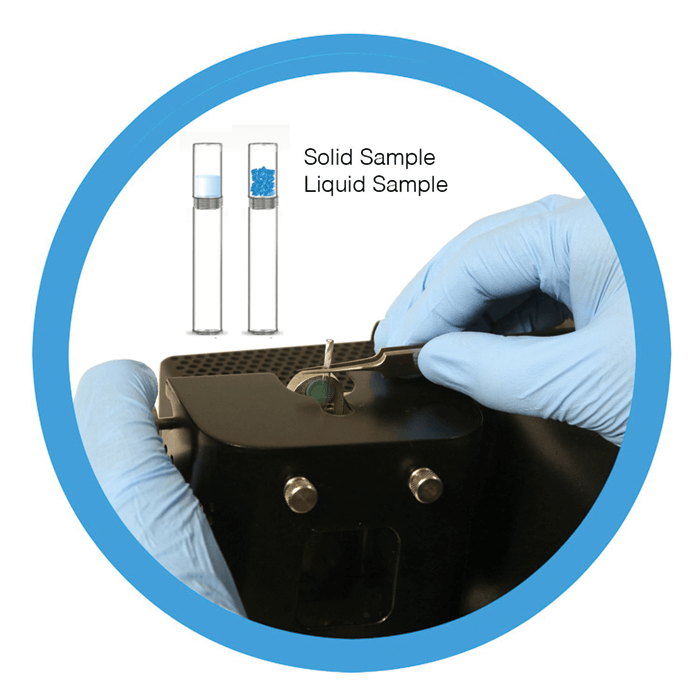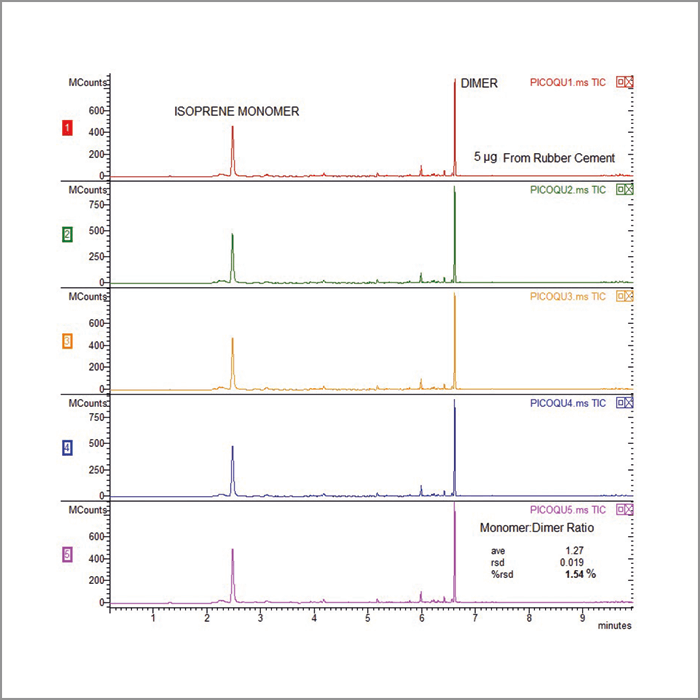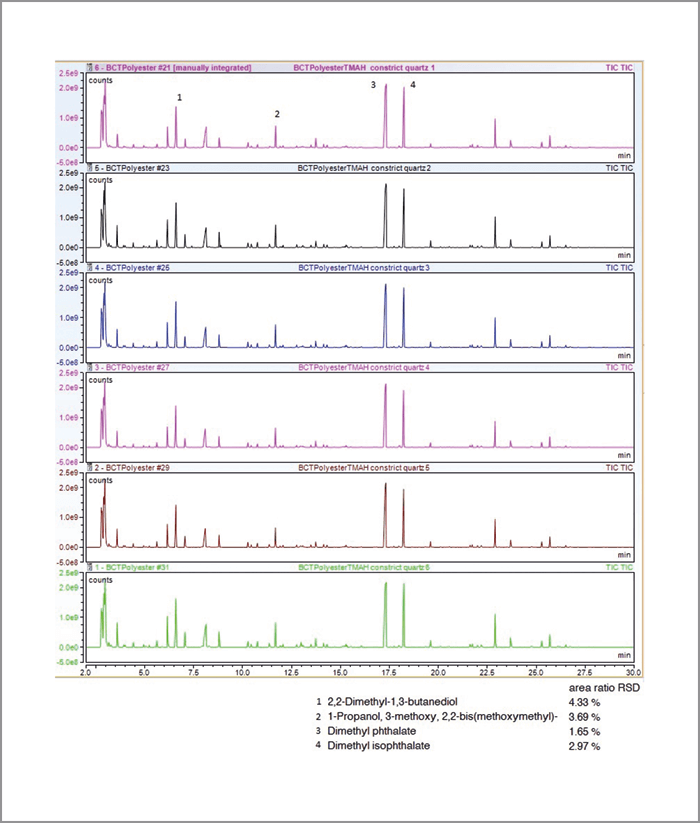Analytical value depends on the reproducibility of the technique. Reproducibility with a thermal technique depends greatly on temperature accuracy, as well as sample related issues like homogeneity, and consistent sample placement. Pyroprobe filaments are calibrated using optical pyrometry. Using this technique, a series of 20 firings at 1100°C produced an average measured temperature of 1100.15°C with a relative standard deviation of only 0.04 percent. This ensures that Pyroprobe instruments perform with the highest precision.
Samples in the following examples were prepped in DISC tubes, which are precisely sealed at the proper location to ensure correct sample placement within the coil filament (Figure 1). Because of this, it can easily handle both liquid and solid samples. Figure 2 shows five runs of rubber cement diluted in hexane, at 600°C using a Pyroprobe 6000 Series Autosampler. For each run, 0.5µl of the solution was added to a quartz DISC tube, for a sample weight of 5 µg. This produced an RSD for the monomer to dimer ratio of 1.5 percent.

Thermally assisted hydrolysis and methylation (THM) is a useful method for characterizing polyesters, using heat and a reagent to fragment them into recognizable building blocks of methylated polyols and polyacids. In the next example, thermally assisted hydrolysis was performed with tetramethyl ammonium hydroxide and a polyester resin. Approximately 10mg of polyester was dissolved directly into 0.25mL of TMAH (25 percent wt/wt in methanol). Two microliters of solution was added to a DISC sample tube containing a small pad of quartz wool, and run at 540°C. Low peak area ratio RSDs were computed for 4 identified compounds. Replicates are shown in Figure 3. Reproducibility of the Pyroprobe using this technique with its complex sample matrix ranged from 1.65 to 4.33 percent for these compounds.
The latest version of the Pyroprobe from CDS Analytical provides easier sample preparation and introduction. The new DISC and sample tubes and an add-on autosampler module ensures an improved user experience, as well as repeatable, reliable results.








